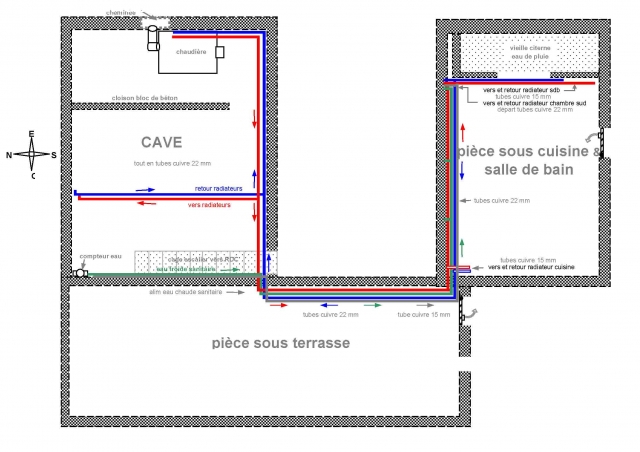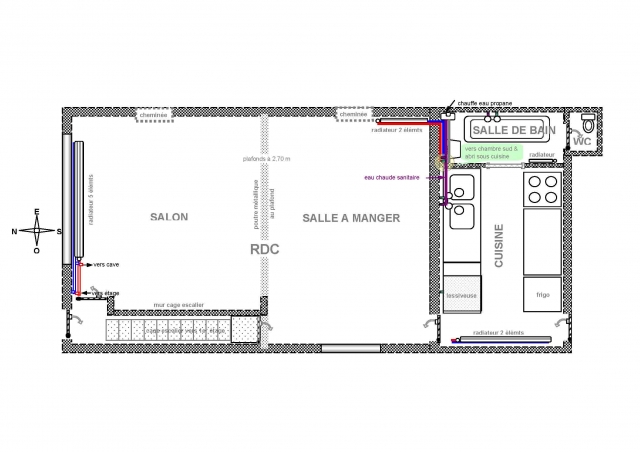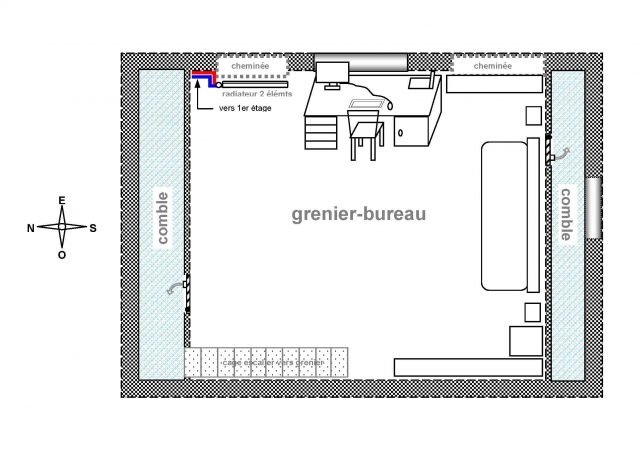If you prefer to do it yourself for budget reasons you are completely in the spirit of this forum, but be careful not to do too much nonsense because in the end it can be expensive!
By typing boiler plan in google or the search engine of the site you will find your happiness I think.
Examples:
https://www.econologie.com/forums/plan-insta ... t6265.html
https://www.econologie.com/forums/chaudiere- ... t9999.html
https://www.econologie.com/forums/conception ... t9698.html
...etc., etc...
My montage made in 2007:
https://www.econologie.com/forums/chaudiere- ... t4589.html
All the diagrams available on econology are here: http://www.google.fr/search?q=site%3Aec ... e&oe=utf-8 And there: http://www.google.fr/search?um=1&hl=fr& ... di%C3%A8re
Click on the image for explanations on the subject ...
You can also search directly here:
https://www.econologie.com/forums/confort-th ... -vf67.html without going through the search engine
I recommend this very good site:
http://herve.silve.pagesperso-orange.fr ... uelgaz.htm
Fuel / gas boiler with two circuits and DHW production.In this case, one of the two circuits is a circuit with radiators and the other a floor heating circuit. The latter is controlled by a 4-way valve while the radiator circuit operates at boiler temperature. The diagram shows the possibility with a motorized 3 and 4-way valve. The underfloor heating circuit is fitted with an aquastat of maximum temperature (9), generally limited to 50 ° C. In this case, if the flow temperature exceeds 50 ° C, the aquastat switches off the circulator (phase cut in the junction box 7).
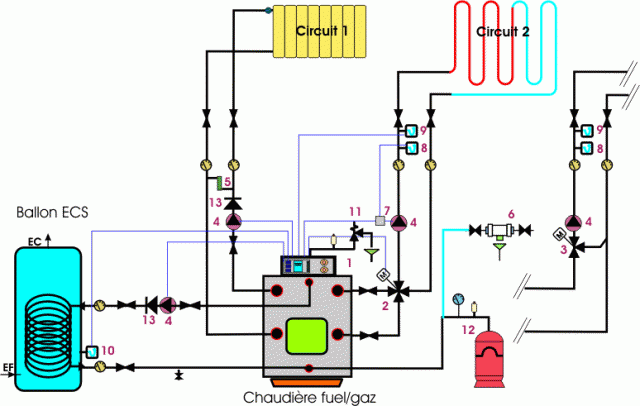
Legend:
1 regulation
2 motorized 4-way valve
3 motorized 3-way valve
4 circulators
5 differential valve
6 filling backflow preventer
7 junction box
8 safety aquastat maximum temperature for underfloor heating (50 ° C)
9 start probe
10 DHW probe
11 safety valve
12 expansion tank
13 anti-thermosiphon valves
Fuel / gas boiler with a heating circuit and DHW production.The sketch shows the possibility of connection with a 3-way valve, a 4-way valve and without mixing valve.
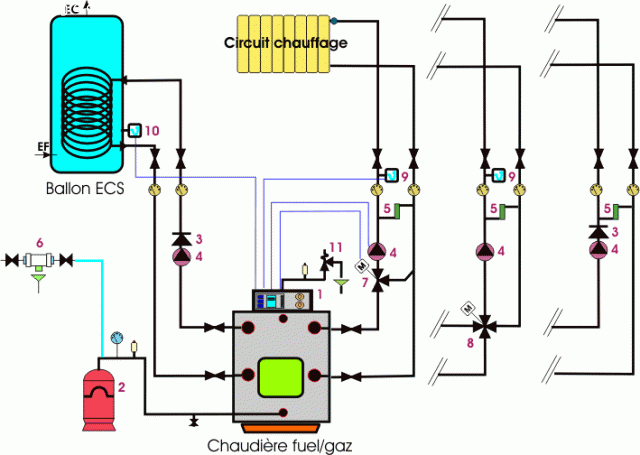
Legend:
1 regulation
2 expansion tank
3 anti-thermosiphon valves
4 circulators
5 differential valves
6 filling backflow preventer
7 motorized 3-way valve
8 motorized 4-way valve
9 start probe
10 DHW probe
11 safety valve
For your other questions:
1) No, it's not worth it. The network pressure is sufficient not to have to double the pipes ... To say: with us the water supply is done in 12/10 mm and that is enough ...
2) You should find the answers here:
http://herve.silve.pagesperso-orange.fr/plan.htm
The diameters of the cold or hot water pipes in 14/16 mm will be more than enough (as said above we are in 12/10!)
For the heating circuit it will depend on the precise circuit, to do well would be necessary to make a precise calculation of the pressure losses of your circuit (few heating engineers do it with precision for individuals):
http://herve.silve.pagesperso-orange.fr ... e%20charge.
22/20 is often enough. Balancing the network is more important than diameters!
3) Yes it is interesting a priori only because I have strong doubts about the efficiency of the conversion, a pellet boiler is very specific ... especially to be able to clean the exchanger regularly (the pellet does more smoke than fuel oil)
That's all the time! Good luck







